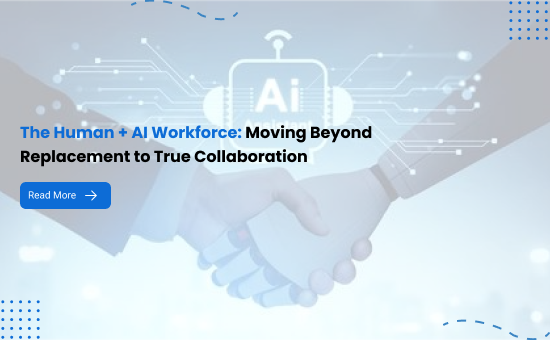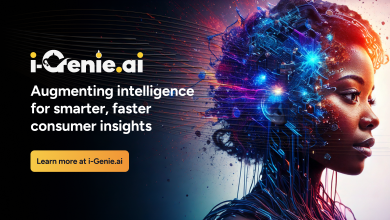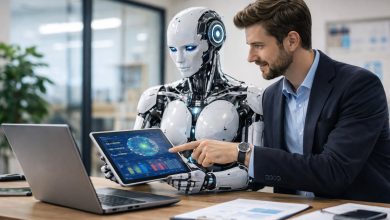
Breaking the Binary
For years, the conversation around AI and jobs has been framed as a fight: humans versus machines. Headlines warn of mass layoffs, while futurists debate the “end of work.” These narratives are dramatic, but they’re not what I see when I speak with business leaders across industries.
Inside enterprises, the story is more nuanced. It’s not about wholesale replacement—it’s about rethinking how work is structured. AI is becoming a powerful collaborator, not a competitor.
According to PwC, AI is projected to add $15.7 trillion to global GDP by 2030, largely through improved productivity, personalization, and decision-making. Yet the way this value materializes depends on whether organizations view AI as a tool to augment humans or as a shortcut to replace them. From my experience, the companies that choose augmentation are the ones unlocking real growth.
Why the Replacement Narrative Falls Apart
McKinsey research confirms that only 5% of occupations can be fully automated, but nearly 60% of roles have at least 30% of activities that could be automated. This is a critical distinction: very few jobs disappear, but many change.
Take healthcare. AI can analyze imaging scans faster than humans, but it lacks clinical judgment, empathy, and the ability to integrate context from a patient’s history. At leading hospitals, radiologists don’t see AI as competition—they see it as an assistant that handles routine scans so they can focus on complex cases and patient interaction.
Similarly, in financial services, AI can process compliance reports or detect anomalies in transactions at scale. But the final call—whether to freeze an account, investigate fraud, or report to regulators—remains a human responsibility. AI expands reach; it doesn’t eliminate responsibility.
The same pattern repeats in logistics, retail, manufacturing, and even creative fields. AI doesn’t remove humans from the equation; it shifts where they add value.
A Framework for Human + AI Collaboration
Based on my work with enterprises, I’ve come to see human–AI collaboration as a three-layer model:
1. Automation Layer
- AI takes over repetitive, rules-based tasks.
- Examples: invoice reconciliation, inventory forecasting, IT log monitoring.
- Value: speed, accuracy, and cost reduction.
2. Augmentation Layer
- AI enhances human decision-making by providing insights and recommendations.
- Examples: copilots in customer service, recruitment screening, predictive maintenance alerts.
- Value: higher efficiency and better-informed judgment.
3. Innovation Layer
- Humans and AI co-create new solutions and opportunities.
- Examples: drug discovery, climate simulations, generative design in engineering.
- Value: breakthroughs that neither could achieve alone.
Leaders who understand these layers avoid the trap of “all or nothing” automation. They create a roadmap that blends automation where it makes sense, augmentation where it empowers, and innovation where it transforms.
Enterprise Stories of Human + AI Collaboration
- Airbus and Generative Design
Airbus uses generative AI to explore thousands of design options for aircraft components. Engineers still make the final call, but AI opens doors to possibilities humans wouldn’t generate alone. The result: lighter parts, lower fuel consumption, and safer designs.
- Mayo Clinic and Patient Records
At Mayo Clinic, AI systems scan vast volumes of patient records to flag anomalies. Physicians use these insights to prioritize critical cases. The outcome is more time for meaningful doctor–patient interaction and faster detection of urgent conditions.
- Retail Personalization Beyond Chatbots
A global retailer I worked with began with chatbot pilots but quickly realized AI could do more. By combining purchase history with browsing behavior, they built recommendation engines that improved customer satisfaction scores by double digits. Importantly, customer service teams didn’t shrink—they evolved into specialists who handle nuanced queries AI couldn’t resolve.
- Cybersecurity in Financial Services
Banks are using AI to detect fraud patterns in real-time. Yet, instead of automating the entire process, they empower fraud analysts with AI dashboards. This hybrid approach reduces false positives and ensures regulatory compliance while scaling protection across millions of transactions.
These cases illustrate a key point: AI is most powerful when it extends human reach, not when it replaces human roles.
The Shifting Skill Landscape
The workforce of tomorrow will look very different—not because jobs vanish, but because skills evolve.
The World Economic Forum predicts that 50% of employees will need reskilling by 2027, and employers rank analytical thinking, creativity, and resilience as the top skills of the future.
Here are the capabilities I see rising in demand:
- Critical thinking – validating AI outputs and spotting flaws.
- Emotional intelligence – navigating human interactions where trust, empathy, and cultural nuance matter.
- Ethical judgment – guiding AI decisions in sensitive domains like hiring, lending, or healthcare.
- Adaptability – learning to use AI tools effectively as they evolve.
Interestingly, some of the most human traits—judgment, empathy, creativity—are becoming more valuable, not less. AI magnifies their importance because it handles the repetitive, leaving humans to focus on higher-order contributions.
The Non-Negotiable Role of Oversight
Enterprises are learning the hard way that AI is not infallible. We’ve seen hiring algorithms that unintentionally penalized women, legal models that fabricated case citations, and medical systems that produced unsafe recommendations.
This is why humans must remain in the loop. AI can draft, suggest, or detect—but accountability still lies with people. Regulatory frameworks like the EU AI Act reinforce this reality by mandating explainability, transparency, and human oversight for high-risk applications.
For leaders, this means investing not just in AI systems, but in governance models that ensure they are applied responsibly. Without trust, adoption collapses.
Culture: The Overlooked Factor in AI Success
From my experience advising organizations, the technical implementation of AI is rarely the hardest part. The bigger challenge is cultural.
Employees often fear AI will make them redundant. If leaders don’t communicate a vision of collaboration over replacement, resistance grows, adoption slows, and ROI evaporates.
The companies that succeed create a culture where AI is positioned as a partner. They run workshops, reskill teams, and highlight internal success stories. They celebrate not the reduction of headcount, but the elevation of capability.
One CFO I spoke with put it well: “Our goal isn’t to cut costs with AI—it’s to make every employee more valuable.” That mindset makes all the difference.
Moving From Fear to Partnership
The arrival of electricity replaced some manual jobs, but it created whole new industries. The internet displaced certain businesses, but it gave rise to e-commerce, digital media, and entire ecosystems of opportunity. AI will follow the same trajectory.
The leaders who thrive in this transition won’t be those who treat AI as a replacement strategy. They will be the ones who embrace AI as a partnership strategy, investing in human skills, cultural alignment, and responsible guardrails.
The future of work is not man versus machine. It is man with machine. And those who understand this shift will define the next decade of enterprise growth.




